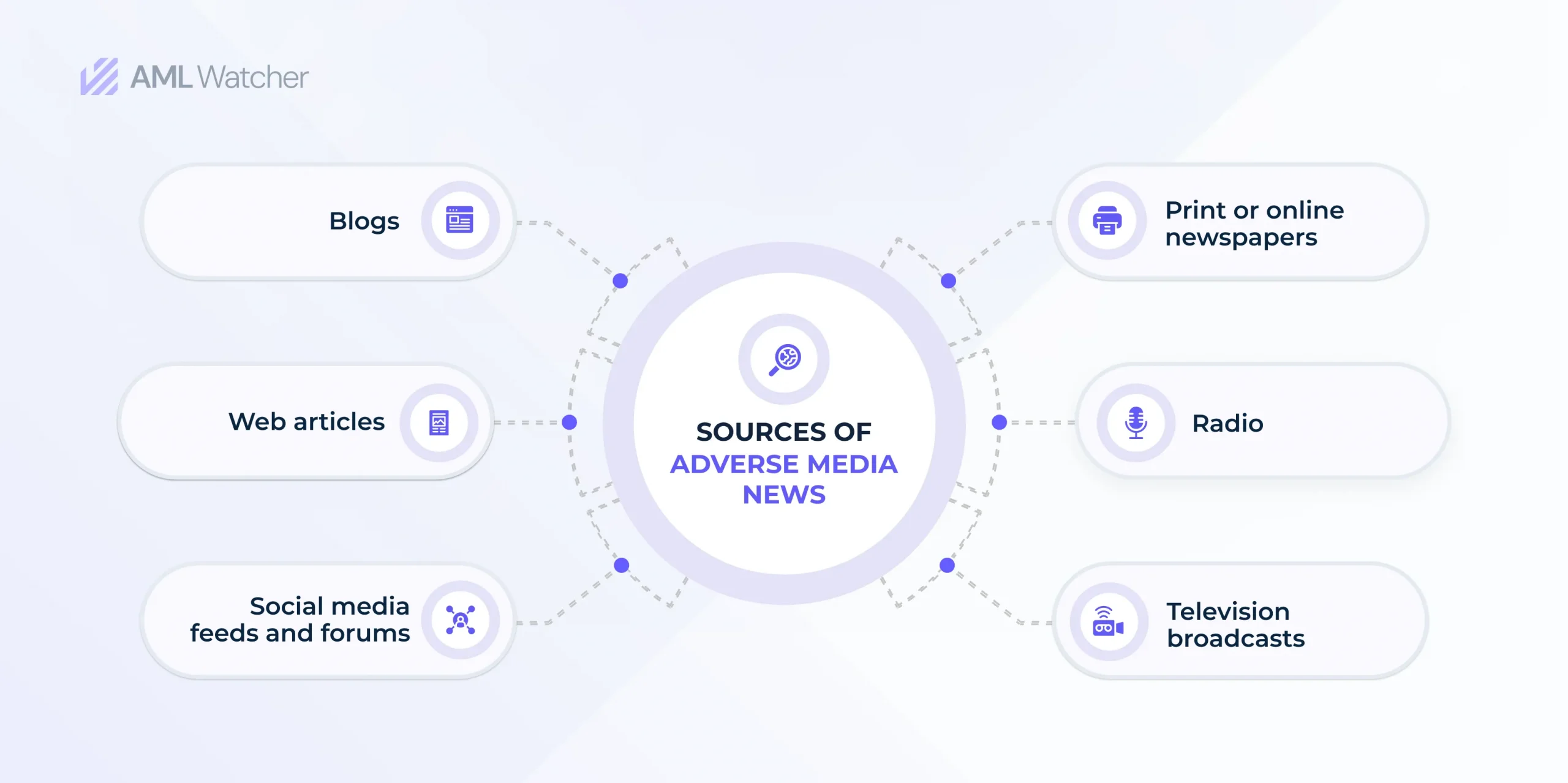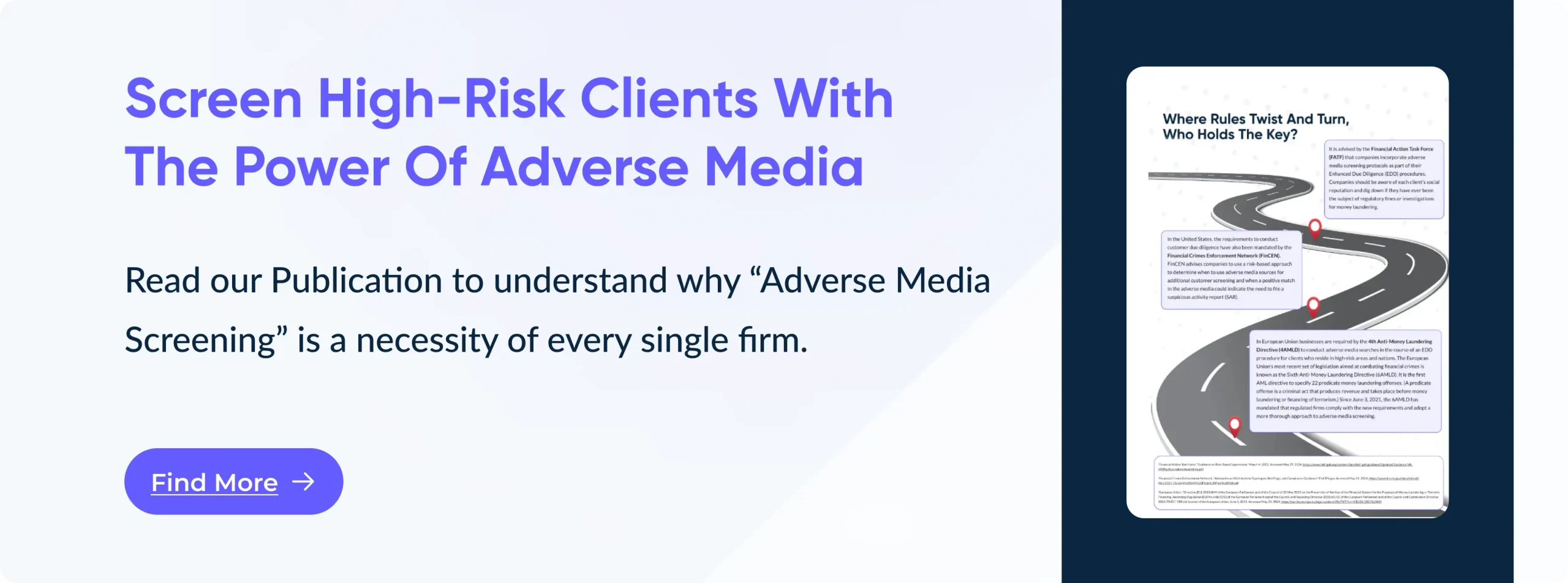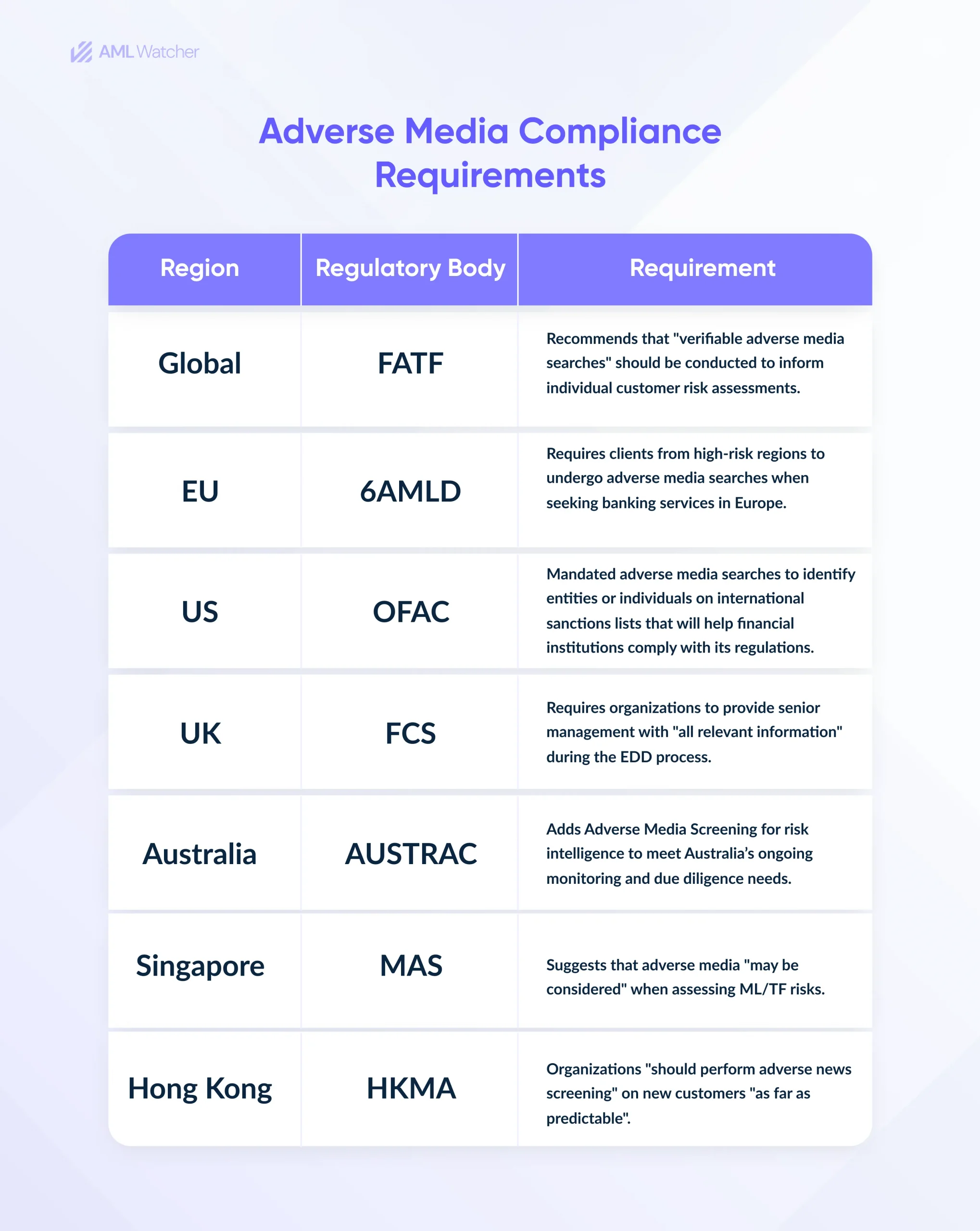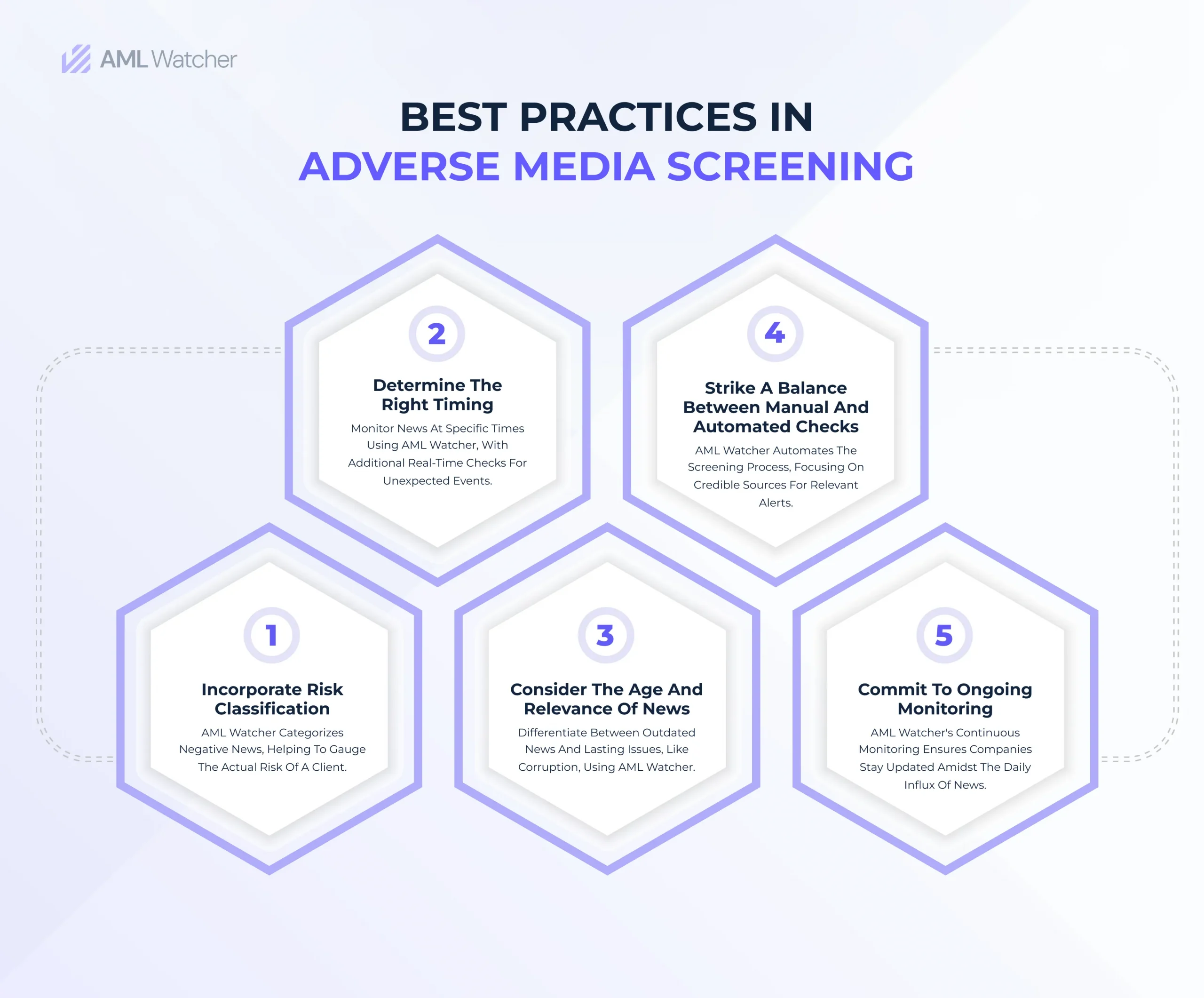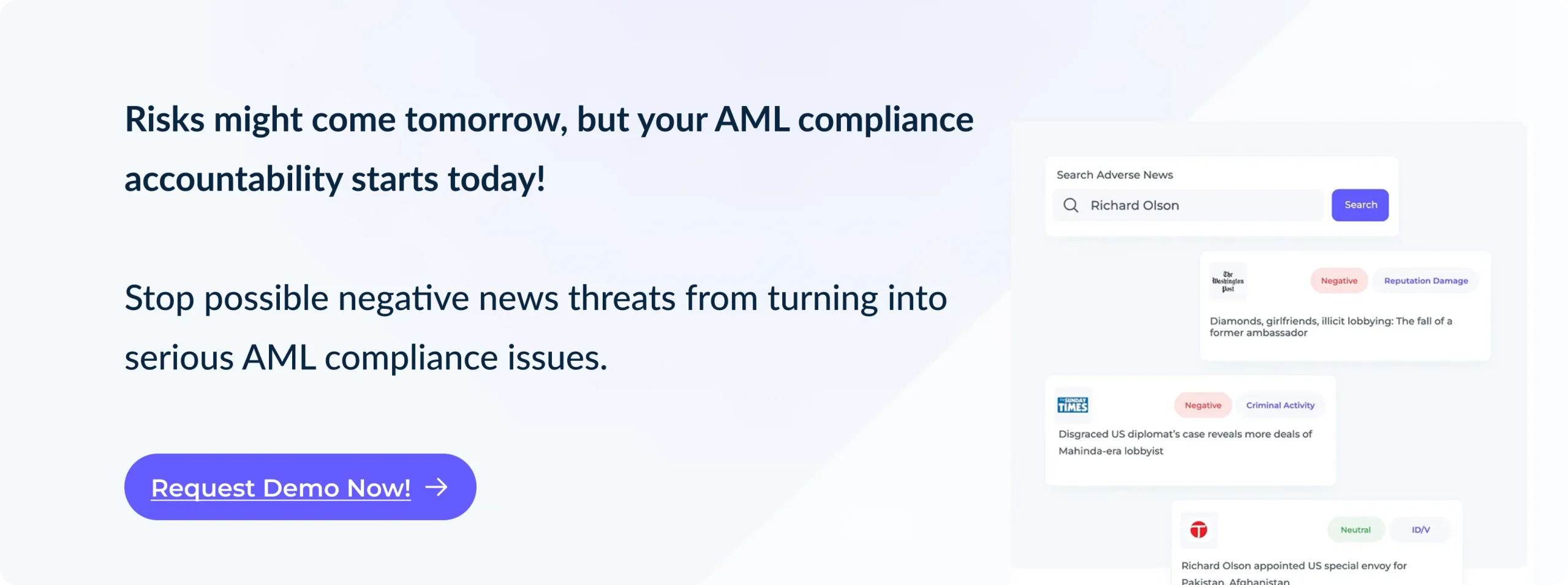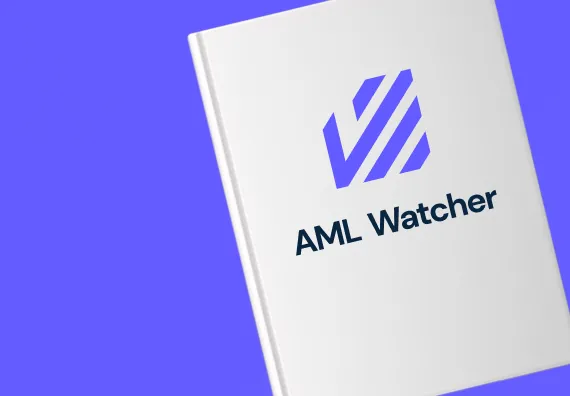
Key Reasons Financial Institutions Must Screen For Adverse Media
Think of adverse media as the largest forest with an owl named Ollie!
With a smarter and more intuitive approach, better than any other creature around, Ollie reaches the tallest heights, viewing stories, blogs, broadcasts, and other modern sources of media with a much broader perspective.
What Is The Concept Of Adverse Media Screening?
Adverse media is described as any unfavorable or inaccurate information about businesses, brands, or persons that appears in a variety of media channels.
Adverse media screening or negative news screening is the process of evaluating and monitoring news and media sources from around the world to detect unfavorable news coverage about individuals or organizations that may point to possible risks, like regulatory violations, financial fraud, or other forms of wrongdoing.
This screening can be part of the KYC and AML/CTF process during client onboarding or an ongoing, automated check using a vendor database.
The dynamic nature of negative news screening with continuous data updates restricts users from examining the results to detect risks more quickly and affordably.
The critical concern that arises here is why it is important to evaluate each piece of news in detail.
Why?
Why Adverse Media Screening Is Important?
According to McKinsey and Company research, adverse media screening is vital as regulatory bodies have advised negative news screening as an enhanced due diligence technique, particularly in high-risk scenarios.
This demonstrates how important it is to guarantee adherence to legal requirements. Additionally, evaluators have also been raising concerns about the monitoring systems’ efficacy, suggesting that more thorough negative news screening is required to spot such threats.
As per, the Data Research & Development Centre, CTBC Bank, identity checks against possible money launderers, terrorists, or those deemed high risk in the financial industry are necessary for compliance with Anti-Money Laundering (AML) and Know Your Customer (KYC) requirements.
Adverse Media screening made these identity checks possible, which guarantees that financial organizations such as banks are not unintentionally supporting financial crimes.
Key Reasons Financial Institutions Must Screen for Adverse Media
Financial organizations must do adverse media checks for the following vital reasons:
AML Regulatory Compliance
Integrating adverse media checks helps financial institutions stay in line with changing regulatory standards as there is a greater focus on financial crimes.
As per international regulatory bodies:
This strengthens a financial institution’s customer due diligence (CDD) efforts and demonstrates its commitment to proactive AML compliance.
Improved Risk Profiling
Screening for bad news creates a thorough and accurate risk profile of the financial institution’s customers. This proactive approach helps in foreseeing potential threats, ensuring that institutions remain prepared and avoid unexpected risks.
The Financial Action Task Force (FATF) also promotes a risk-centric approach to counter money laundering threats. Within this framework, adverse media screening plays a key role in creating precise customer risk profiles, especially for high-risk categories like Politically Exposed Persons (PEPs).
Enhanced Due Diligence
Regulatory bodies globally have underscored the importance of adverse media screening. It’s now a pivotal component of the know-your-customer (KYC) onboarding process, continuous CDD, and enhanced due diligence (EDD) for high-risk clientele.
Protecting Reputation
Financial institutions associated with individuals or entities involved in illegal activities or scandals can lead to severe reputational harm. Adverse media screening helps detect potential risks by flagging negative news about those clients or partners, allowing the institution to avoid business relationships that could damage its public image.
By proactively screening for such red flags, institutions can maintain trust and credibility with regulators, clients, and the public. This proactive approach allows institutions to screen red flags and maintain trust and credibility with regulators, clients, and the public.
Holistic Customer View
Modern adverse media screening tools offer a comprehensive view of clients, encompassing both individuals and entities. This holistic perspective ensures a thorough risk assessment at the onset of the customer relationship and real-time alerts for any significant changes in risk profiles.
Keeping these reasons in mind one must think about what if an institution faces too many hurdles to utilize this technology effectively.
The most common challenges faced by institutions to conduct effective adverse media screening are discussed below.
Common Challenges in Adverse Media Screening
Sorting Through Irrelevant Data
One of the primary challenges in negative news screening is filtering through large volumes of data to find relevant information.
Analysts often struggle with an overload of irrelevant or noisy data, making it difficult to refine searches effectively. Even with details like a customer’s date of birth or location, using general search tools like Google is not always efficient.
Reading through countless pages is neither practical nor time-effective, and distinguishing between relevant and irrelevant content remains a hurdle, especially when it comes to verifying if two individuals with the same name are, in fact, the same person.
Ensuring Data Credibility
Given the variety of sources, including unreliable ones like fake news, extremist websites, biased posts, and satirical pieces, determining the quality and credibility of data becomes a complex task.
Careful evaluation of each source is essential, which adds another layer of complexity to the process. Relying only on mainstream sources, such as national newspapers, or local coverage is also insufficient, as this can overlook risks not yet deemed significant at a national level.
Identifying potential risks before they become widely known underscores the need for a thorough and effective approach to adverse media screening.
Maintaining Up-to-Date Information
Another difficulty is regularly evaluating a customer’s risk profile over time.
It is impractical to search through millions of results every time there is an update. Some may opt to ignore this challenge or limit adverse media checks to a small set of high-risk customers.
However, this approach may not effectively mitigate risks, as individuals involved in financial crimes may not always be immediately identified as high-risk.
At this point, the major concern arises; How can financial institutes overcome these challenges?
Do they need to hire detectives who will keep strict monitoring on every headline, press release, and social media post that can act as a clue, leading them to uncover the financial culprits and safeguard their business?
We have a simple answer to all these queries!
Financial institutions don’t need to hire detectives but choose an efficient screening solution provider who will act like Sherlock Holmes to uncover the sensitivity, fakeness, and biases of every piece of news. And AML Watcher is no less than exceptional.
How?
AML Watcher Sets Standards In The Industry
AML Watcher stands out as a reliable solution in these days of information saturation where it is complicated to differentiate between real news and noise.
It provides an all-encompassing, effective, and focused method of negative media filtering, guaranteeing that companies stay informed without being overtaken by unimportant information.
Businesses may prioritize risks more efficiently by classifying bad news and taking news age and relevance into account.
Furthermore, the capacity to monitor data in real time guarantees that no important information is overlooked. It operates on:
Sentiment Analysis
AML Watcher utilizes sentiment analysis in its screening process. This includes assessing the context and tone of media content to determine whether the news is unfavorable or positive.
It distinguishes between pertinent and irrelevant negative news, thereby lowering false positives and guaranteeing attention is directed toward real threats.
Relevant Risk Scoring
Based on the strength and type of the negative sentiment, each recognized negative media item is assigned a sentiment score.
Our specialists examine high-priority and high-scored news identified by sentiment analysis to verify the results and make sure no important information is overlooked.
Balanced Human and Automated Checks
Manual checks may present detailed results but they take a lot of time and resources. AML Watcher fills that need with its automated screening procedure, which makes sure businesses are aware of the most recent media actions.
Adhere to Continuous Monitoring
It’s critical to keep searching for fresh data after the first screening. AML Watcher’s ongoing monitoring of global news sources assures that businesses are always up to date on the most recent advancements.
It regularly filters out irrelevant data, focusing on credible information to quickly identify potential threats.
Include Risk Classification
Not all bad news has the same significance. While some may be minor problems, others may be serious warning signs. AML Watcher categorizes these results, which facilitates comprehension of the true risk attached to a client.
Evaluate the Relevance and Age of News
Some news loses its relevance over time, but some events—particularly grave ones like corruption—have not decreased their significance over time. AML Watcher can assist in determining what is current and what is still relevant.
To conclude, in the deep forest of MediaLand, where information moves like a fresh breeze, businesses are on the verge of finding a bright root apart from the darkness of negative media.
Similar to the vigilant owl Ollie, Adverse Media Screening shines a light on the road to risk reduction and legal compliance. As we’ve sailed through the complexities of adverse media screening, AML Watcher stands out as a beacon of hope.
We are here to consult you
Switch to AML Watcher today and reduce your current AML cost by 50% - no questions asked.
- Find right product and pricing for your business
- Get your current solution provider audit & minimise your changeover risk
- Gain expert insights with quick response time to your queries

